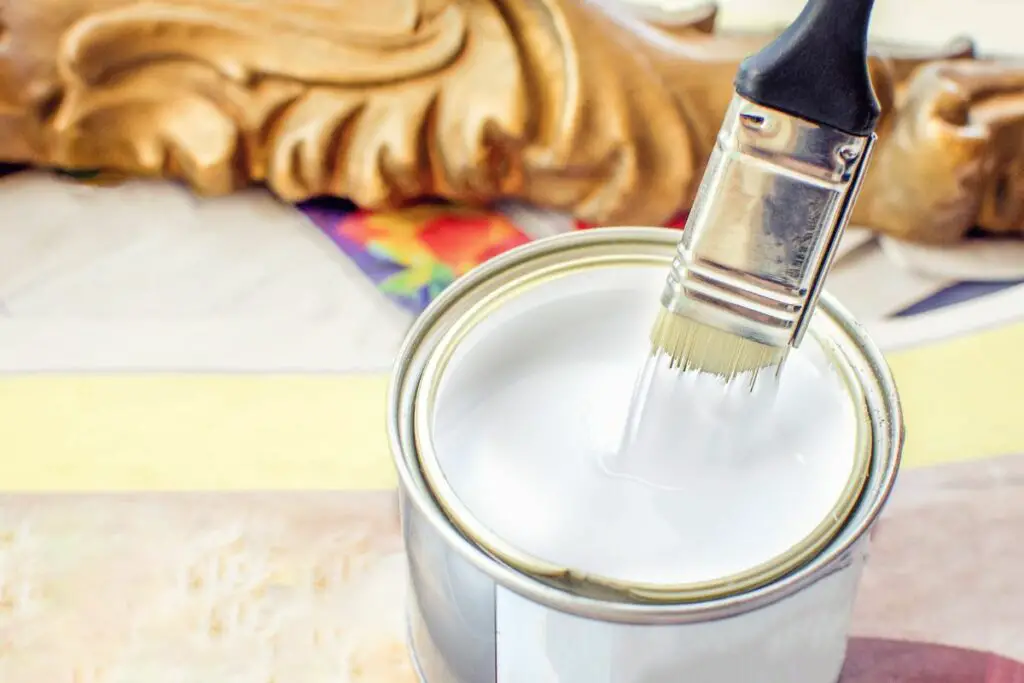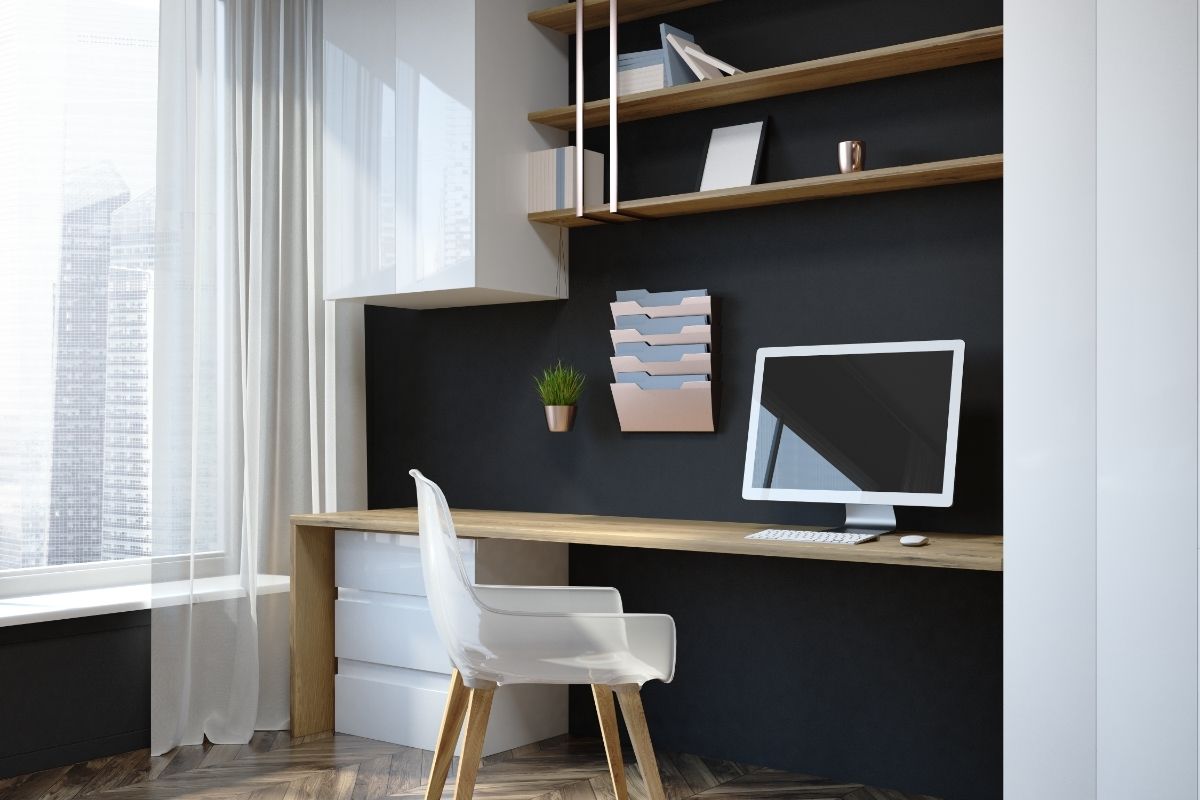You may have heard people debate the differences between white and eggshell white, and other shades of white. While this can seem like a pointless debate, it can actually matter, and when choosing a white paint, these grades will matter a lot.

Bear in mind with any paint you choose, you will have to pay for it, and when you use it you don’t exactly want to be repainting it again anytime soon.
One neutral and white paint that many interior designers recommend is White Dove by Benjamin Moore, if your interior designer has recommended this, or you are planning on painting your own walls, it can be helpful to get another opinion on whether this is the right color, and if the hype is really worth it or not.
We’re here to do the research for you. Keep reading to learn all about White Dove by Benjamin Moore as well as neutral paint colors in general. Find this out and more below.
What Is White Dove By Benjamin Moore?
White Dove is a shade of white paint that is sold by the architectural coatings company known as Benjamin Moore & Co. Benjamin Moore isn’t a specific designer, but the founder of this titular company.
White Dove is a shade of white paint sold by Benjamin Moore and is arguably one of the most popular off-white paint colors out there, considered by many now to be iconic.
It’s perhaps most well known for its complex relationship of undertones that exist beneath the obvious white coloring.
These unique off white undertones make it really versatile in how it works with other colors, shades of white, and how it looks on its own.
What Is The LRV Of White Dove?
LRV stands for light reflectance value and is measured on a scale that ranges from zero, completely oblique and black, to 100, which is pure white and reflects all light.
Knowing the LRV of a color is really helpful to coordinate color and understand how the paint affects light. It can be really helpful when dealing with different shades of white, as to our naked eye these shades of white may be harder to see, albeit still affecting us.
White Dove has an LRV of 85.4% which can categorize this paint as a soft white. The warm and off-white color has a yellow undertone that is ‘invisible’, insofar that it is muted by a gray finish.
If you use this color in tandem with other white colors, this yellow undertone is more visible. By itself this yellow undertone makes it feel warmer but is muted by the gray layer which perhaps gives the color its unique shade of white.
How Is White Dove Affected By Lighting?

As a result of this LRV, it’s worth considering how this tone of white will interplay with the sun in the circumstances your home affords. In other words, the sun’s exposure will play a large role in how White Dove looks.
Overhead lighting can also impact White Dove too, which is worth considering in certain rooms. In well lit rooms it can make the walls seem really bright, which may have the effect you are looking for.
An east facing kitchen may benefit from White Dove as a color that helps bring and reflect light in a room. Whereas in a north facing room, the highly pigmented shade of white can look great in dim light, or artificial light.
Put simply, White Dove can look really great in low light, artificial light, and dim light, thanks to its high pigmentation and yellow undertones.
But, in bright natural light it can be really bright, which is good but needs to be taken into account when using White Dove to brighten up a space.
As a result of it looking this bright in natural light, it’s maybe not the best choice for an exterior wall color you might use on the outside of your house.
It’s a very light paint and has low contrast so it can look quite stark, often being around 5 – 10 times brighter in the natural light of the sun.
Moreover, the coat is low pigment which is good for the inside but not for an exterior wall as more coats would be required for coverage.
How And Where To Use White Dove?
So, as we explained White Dove by Benjamin Moore is a highly reflective shade of white, but it works really well indoors thanks to high pigmentation as well as a unique under and overtone relationship that is perfect for unnatural, dim lighting.
But being so reflective and bright in certain situations, it can also be used to bring light into rooms.
It can be best to consider White Dove when you already know some elements that will be in the room, it can be pretty hard to plan a room simply off the back of this white paint.
For example, if you have some burgundy tiles in your kitchen, perhaps with some dark or varnished wood detailing, you might use White dove on the interior wall areas as a way to help brighten up the luminescence of the kitchen itself.
But this is way easier to do once you know what countertops, tiles, other paints, you are using.
On the other hand, you might be planning out a study where you want to use a neutral color for aesthetics.
Consider the furniture that might be in the room, go for something dark or complex in patterns to contrast the neutrality of the paint itself.
Consider how the sun affects that room, if it is consistently dimly lit then White Dove might be an ideal neutral color, whereas if it gets a lot of light White Dove might be too bright.
When used in tandem with other painted walls of different colors or even different shades of white, it’s really worth considering how these colors will operate alongside White Dove and how they may compliment or contrast each other.
Consider getting a large piece of wood or a canvas that has been painted with White Dove so you have a temporary example you can use to check how it interacts with light and how other colors can interact with its undertones and overtones with this shade of white not being a ‘true white’.
You could even consider using White Dove on the trim in certain interior rooms. It’s a great way to reflect light up and also bring out the darker colors of a room with the brightness of this white, as well as its undertones.
We suggest, when using White Dove on trim, to go for a satin sheen, or even lower. Trim can often get scuffed up or stained, and the glossier your paint is the harder it is to clean easily.
In the same way it works on trim, it would also function well on cabinets or ceiling for the same reason.
Where Not To Use White Dove?
There are a few colors and materials that aren’t great with White Dove and expose some of the less desirable elements of the shade. For example, with lighter colored marble work surfaces White Dove can look a little green and unpleasant.
Equally, if you have white appliances or countertops this will make your walls look less white when painted with White Dove.
In terms of light, a south facing light can definitely make the shade seem more yellow. This can be desirable for some people and is why it’s useful as a neutral color, but if you are looking for a brilliant white color to reflect south facing light, then this isn’t the choice to make.
Final Thoughts
Most consider White Dove to be a really great off white shade to use around the house, and if you want a warm white color it’s worth considering.
It has creamy undertones of yellow that work magically with its gray overtone, giving it that unique finish that people seem to love.
White Dove is perhaps best used indoors in rooms that are dimly lit or use lots of artificial light, the warmness of this shade of white provides the perfect neutrality to a room like this and is ideal in a study or calm space.
Equally, White Dove is pretty versatile and could also work really well in tandem with other colors and materials. Some materials to avoid are marble as this can bring out some greenish and yellow undertones in the White Dove that aren’t pleasant.
As a result, we always suggest using swatches and samples of White Dove before committing to a full can of paint. White Dove can interact greatly with other colors, materials, as well the way light hits it.
So we really recommend sampling it and seeing how it interacts with a room before buying.
If you want an off-white, neutral, shade of white White Dove can be considered one of the best for its versatility and complexity. Just make sure you have samples to try before committing to anything.
- Benjamin Moore Palladian Blue Paint: A Color Review - September 5, 2023
- 10 Of The Prettiest Interior Door Colors - August 29, 2023
- Hale Navy: The Best Navy Paint Color - August 22, 2023

![How To Design A Room Like An Interior Designer [Step By Step] ow To Design A Room Like An Interior Designer [Step By Step]](https://alexanderandpearl.co.uk/wp-content/uploads/2022/02/How-Much-Does-A-Pop-Up-Camper-Weigh-33.jpg)







